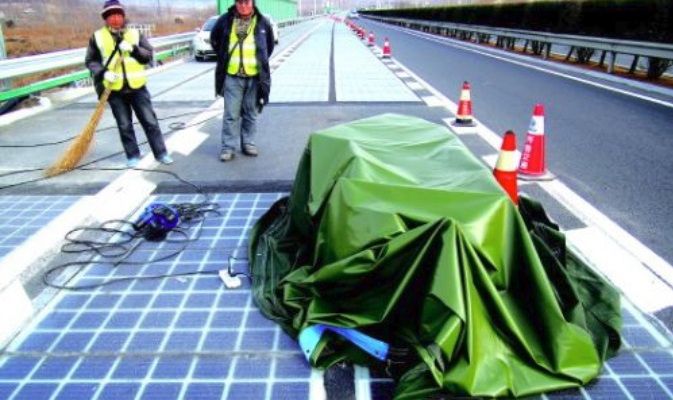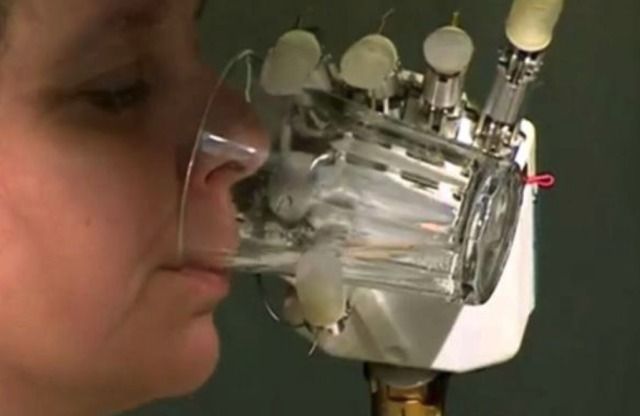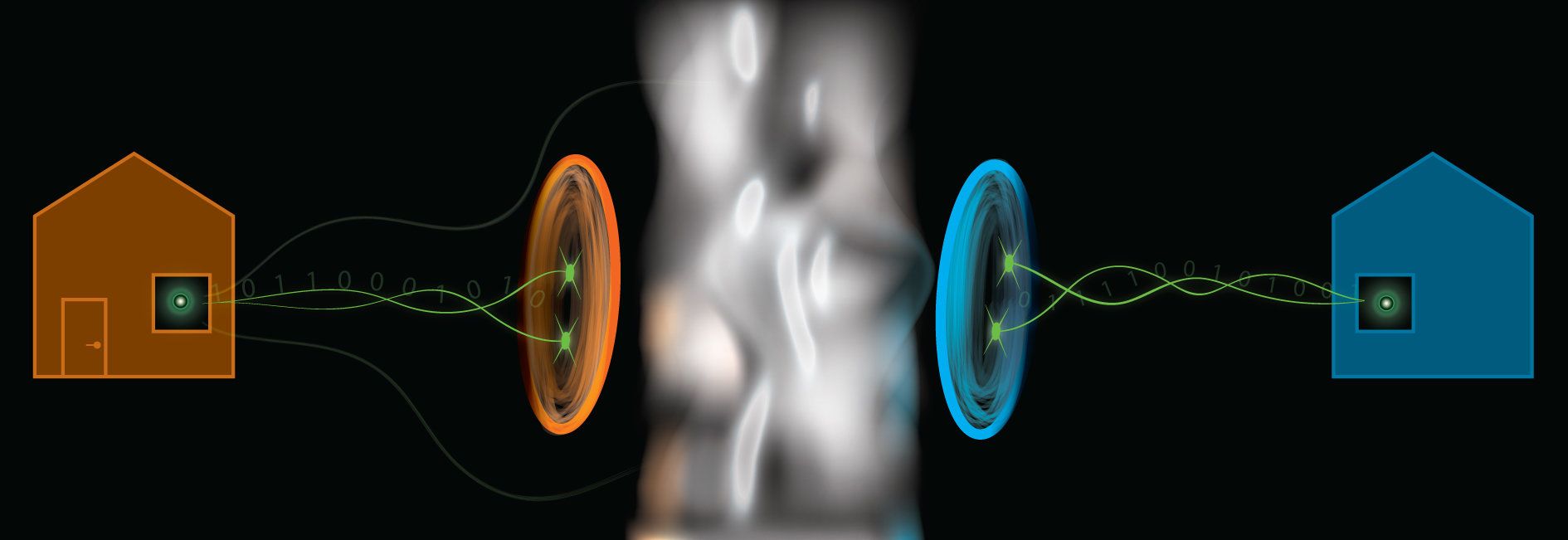Scientists are using X-ray tech to read this sealed document without opening it.
Get the latest international news and world events from around the world.

Someone stole a piece of China’s new solar panel-paved road less than a week after it opened
I guess the idea works, but there’s one little snag.
Putting solar panels into our roads isn’t the craziest idea, but we may as well admit that it poses some unique challenges. For instance, people may want to walk away with pieces of it. That’s what happened in China, anyway, just five days after authorities opened up what they claim is the world’s first solar panel-paved highway.
As reported by the Qilu Evening News (and noted by TechNode), the experimental kilometer-long stretch of road in Shandong is covered in more than 10,000 solar panels, sandwiched between an insulating layer on the bottom and a durable, transparent one on top — less than 3 cm thick all told. There are coils that can charge electric cars as they drive over it, and the system can even warm up in order to melt snow and ice. It opened to use on December 28.
Unfortunately, during an inspection on the morning of January 2, officials found a narrow piece missing, neatly cut. About 6 inches wide and 6 feet long, the piece didn’t appear to have detached on its own — suggesting someone stole it. But why?

Where China’s top leaders will hide to survive nuclear fallout
China is not the only country with a nuclear bunker for its top leaders. Governments of major powers built similar bunkers during the cold war era, and while several have since been abandoned or opened to tourists, some are still used for defence purposes.
Scientists shed light on Beijing’s nuclear bunker located in ‘world’s most deeply buried karst caves’.
Hundreds of robot realtors are helping Bay Area renters find new homes
The Silicon Valley property management startup Zenplace wants to streamline the rental process with AI learning and robot realtor home tours.

Woman gets equipped with bionic hand that can actually feel
Prosthetics have improved my leaps and bounds over the past century and we’ve reached a point where someone with an artificial limb is often just as capable (and in some cases even more capable) than a person with their natural arms and legs. Still, prosthetics have long fell short in one very important aspect, which is the sense of touch afforded by human skin. That could all be changing thanks to an incredible breakthrough that has provided a woman with a bionic hand that can actually feel.
Almerina Mascarello lost her left hand and part of her forearm in an accident more than two decades ago, and was chosen as one of the test subjects for a new type of prosthetic that relays the feeling of touch to the wearer. Remarkably, it seems to work brilliantly.
Don’t Miss : Apple brand battery cases for the iPhone 6/6s and iPhone 7 are discounted on Amazon.

Leave A.I. Alone
December was a big month for advocates of regulating artificial intelligence. First, a bipartisan group of senators and representatives introduced the Future of A.I. Act, the first federal bill solely focused on A.It would create an advisory committee to make recommendations about A.I. — on topics including the technology’s effect on the American work force and strategies to protect the privacy rights of those it impacts. Then the New York City Council approved a first-of-its-kind bill that once signed into law will create a task force to examine its own use of automated decision systems, with the ultimate goal of making its use of algorithms fairer and more transparent.
Sure, the technology poses risks. But the current approach to regulating it is a mistake.
Brain Acceleration Technique Proven to Enhance Learning, Improve Memory
Everyone could be wearing a tDCS cap in 5–10 years, top scientist states.
The World’s Fastest Jet Will Fly You From L.A. To Sydney in 6 Hours
The XB-1 will be the first independently-developed supersonic jet, and the fastest civil airplane ever made. Oh, and tickets are $6,600.

A nonaddictive opioid painkiller with no side effects
What if scientists could develop an opioid-based painkiller that is not addictive and has limited side effects?
That is possible based on new findings by an international team of scientists that included contributions from top researchers at the USC Michelson Center for Convergent Bioscience.
The international team captured the crystal structure of the kappa opioid receptor—critical for providing pain relief—in action on the surface of human brain cells. The researchers also made another important discovery: a new opioid-based compound that, unlike current opioids, activates only the kappa opioid receptor, raising hopes that they may develop a painkiller that has no risk of addiction and, therefore, none of the devastating consequences and side effects that accompany it.

Quantum ‘spooky action at a distance’ becoming practical
A team from Griffith’s Centre for Quantum Dynamics in Australia have demonstrated how to rigorously test if pairs of photons — particles of light — display Einstein’s “spooky action at a distance”, even under adverse conditions that mimic those outside the lab.
They demonstrated that the effect, also known as quantum nonlocality, can still be verified even when many of the photons are lost by absorption or scattering as they travel from source to destination through an optical fiber channel. The experimental study and techniques are published in the journal Science Advances.
Quantum nonlocality is important in the development of new global quantum information networks, which will have transmission security guaranteed by the laws of physics. These are the networks where powerful quantum computers can be linked.